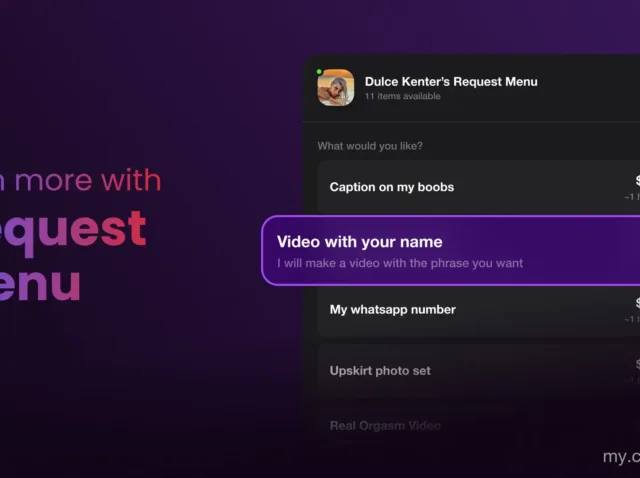The rise of micro-influencers is revolutionizing how brands approach their collaborations and marketing strategies. In today’s social media-driven world, brands are no longer focusing solely on influencers with massive followings. Instead, they’re turning to micro-influencers—those with a smaller, more niche audience, typically between 1,000 to 100,000 followers. These influencers often specialize in particular areas such as beauty, fitness, fashion, gaming, or lifestyle, making them perfect for brands looking to target specific markets.

Why Micro-Influencers Are So Effective in Brand Collaborations
The major advantage of micro-influencers over larger influencers or celebrities is their higher engagement rates. According to various studies, engagement rates for influencers drop as their follower count increases. Micro-influencers, with their smaller followings, can maintain personal connections with their audience, leading to trustworthy interactions. This trust translates into better engagement on posts, be it through likes, comments, or shares, which brands are increasingly recognizing as a key performance metric.
Another factor that sets micro-influencers apart is their authenticity. Their content tends to be more organic and less “advertising-heavy,” which resonates more with today’s social media users who crave real and relatable content. Brands working with micro-influencers benefit from this genuine engagement, as followers are more likely to trust the recommendations and products being showcased.
Micro-influencers also offer a cost-effective alternative for brands, particularly for small to medium-sized businesses. Collaborations with mega-influencers or celebrities can be extremely costly, sometimes running into thousands of dollars for a single post. In contrast, micro-influencers are more affordable and often willing to create content in exchange for free products or a smaller fee. This allows brands to work with multiple micro-influencers simultaneously, maximizing their reach and impact across various segments without breaking the bank.
Targeting Niche Markets Through Micro-Influencers
One of the primary reasons brands are increasingly turning to micro-influencers is their ability to target niche markets. Whether it’s a vegan cooking influencer or a sneaker enthusiast, micro-influencers cater to specific communities. This type of audience segmentation is crucial for brands that want to focus on particular consumer groups who have a strong interest in their products. For instance, a fitness brand might collaborate with a micro-influencer known for posting workout routines and health tips. This ensures that the brand’s products are being promoted to an audience that is already interested in health and fitness, increasing the likelihood of sales conversions.
By using micro-influencers, brands can also experiment with new demographics or test products within certain markets before launching large-scale campaigns. The insights gained from working with micro-influencers can inform broader marketing strategies, as brands can evaluate how specific content resonates with different groups.

Leveraging Micro-Influencers for Creative Campaigns
When it comes to content creation, micro-influencers offer a level of flexibility and creativity that isn’t always available when working with larger influencers. Because they manage smaller audiences, micro-influencers tend to produce more personalized content. Brands collaborating with micro-influencers can brainstorm creative campaigns, from Instagram Stories and Reels to TikTok trends, that authentically integrate products into the influencer’s daily life. This not only boosts brand visibility but also creates a sense of connection between the influencer and their audience, making the promotion feel natural rather than forced.
For example, a beauty brand might work with micro-influencers to create engaging tutorial videos showcasing their products. These could be shared on platforms like YouTube or TikTok, where beauty content thrives. Alternatively, a fashion brand could partner with micro-influencers to create outfit-of-the-day posts, using the brand’s clothing as the centerpiece.
Brands are also using micro-influencers in giveaway campaigns, where influencers ask their followers to participate in a contest or tag friends for a chance to win a product. This not only drives engagement but also increases brand exposure through user-generated content.
Building Long-Term Relationships with Micro-Influencers
Unlike one-off collaborations, brands are increasingly focusing on long-term partnerships with micro-influencers. Consistent collaborations build trust and credibility within the influencer’s community, as followers begin to see the influencer genuinely supporting the brand over time. This also gives brands the opportunity to refine their content strategies based on audience feedback and influencer input.
Brands that foster these long-term relationships often find that micro-influencers become brand ambassadors, continually showcasing the brand’s products and creating ongoing value through content. These influencers can even provide valuable insights into what resonates with their audience, helping brands fine-tune their marketing approach.
Key Benefits of Working with Micro-Influencers:
- Higher Engagement Rates: Studies show that micro-influencers often have a higher engagement rate compared to larger influencers. Their followers are more likely to interact with their content, making them ideal for driving meaningful conversations around a brand.
- Niche Expertise: Micro-influencers tend to focus on specific areas such as beauty, fashion, fitness, or gaming, allowing brands to collaborate with experts in their target markets.
- Affordability: Collaborating with micro-influencers is often more cost-effective than working with mega-influencers, making it a more attractive option for small to medium-sized businesses or those working with a limited budget.

Why Brands Are Prioritizing Micro-Influencers in Their Strategies
- Authenticity and Trust Consumers today are becoming more skeptical of traditional advertising and celebrity endorsements. They crave authenticity, and micro-influencers are often perceived as real, relatable, and trustworthy. Their content tends to be less polished and more genuine, which resonates with audiences looking for honest opinions rather than paid promotions.
- Targeted Reach Brands seeking to tap into highly specific demographics are increasingly turning to micro-influencers. Whether it’s a vegan fitness guru or a niche fashion blogger, micro-influencers offer the ability to target very specific groups that share common interests. This can lead to more successful and impactful marketing campaigns as the content is delivered to people who are genuinely interested in the product or service being promoted.
- Cost-Effective Marketing For smaller brands or startups that don’t have the budget to collaborate with A-list influencers, micro-influencers offer a more accessible and affordable way to run campaigns. Their lower follower count doesn’t necessarily mean a smaller impact—micro-influencers tend to have a devoted follower base, meaning the returns on investment can be substantial.
- More Room for Creative Collaboration Working with micro-influencers often allows brands more flexibility in how they approach collaborations. These influencers typically offer a more personalized touch and can create organic-feeling content that aligns well with the brand’s message. Whether it’s product reviews, giveaways, or behind-the-scenes content, micro-influencers can adapt to the needs of the brand in a creative way.
The Role of Data Analytics in Micro-Influencer Marketing
To make the most of micro-influencer collaborations, brands must rely on data analytics to measure the effectiveness of campaigns. Tracking key metrics such as engagement rate, click-through rate (CTR), conversion rate, and overall ROI helps brands assess the success of a campaign. Data can also identify which micro-influencers are driving the most value, allowing brands to allocate their resources more efficiently.
Platforms like Instagram Insights, TikTok Analytics, and Google Analytics can provide brands with the data they need to understand how their influencer campaigns are performing. With these insights, brands can optimize future collaborations, ensuring they continue to work with the right influencers and create the most impactful content possible.
In conclusion, the rise of micro-influencers has fundamentally changed the way brands approach social media marketing. Their niche expertise, authenticity, and ability to connect with highly engaged audiences make them an invaluable asset in today’s digital landscape. As brands continue to prioritize influencer marketing, the role of micro-influencers will only grow, offering new opportunities for creative collaboration, targeted campaigns, and brand loyalty.
*Banner: Bild von free stock photos from picjumbo_com auf Pixabay








